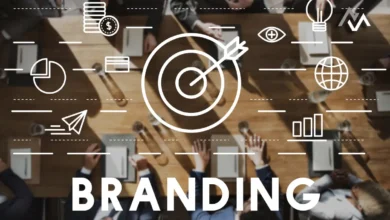7 Subtle Body Language Cues That Show You’re a Natural Leader in the Workplace

Effective leadership isn’t just about the words you speak or the decisions you make. Often, the strongest signals of leadership come from non-verbal communication—your body language. Whether consciously or not, your posture, gestures, and facial expressions can convey confidence, authority, and empathy, making others see you as a natural leader.
Mastering subtle body language cues can make a significant impact on how you are perceived in the workplace. Here are seven non-verbal signals that will help you project leadership effortlessly.
1. Stand Tall and Maintain Good Posture
Good posture is one of the clearest indicators of confidence and authority. A leader stands tall with their shoulders back and head held high. This posture not only signals that you are confident, but it also commands attention and respect. On the other hand, slouching or hunching over may make you seem unsure or timid, qualities that do not inspire trust in leadership.
Maintaining strong posture also impacts your own mindset, reinforcing feelings of confidence and control. As the saying goes, “Stand like a leader, feel like a leader.”
2. Make Eye Contact, but Don’t Overdo It
Eye contact is crucial for effective communication and can reveal a lot about your leadership potential. When you make eye contact during conversations, you show that you are attentive, engaged, and sincere. People tend to trust those who look them in the eye, as it signals openness and transparency.
However, it’s important not to overdo it—staring too long can make others feel uncomfortable or intimidated. Aim for balanced, natural eye contact that shows interest without making others uneasy.
3. Use Open Gestures
Leaders often use open body language to appear more approachable and trustworthy. Avoid crossing your arms, as this can come across as defensive or closed-off. Instead, keep your arms at your sides or use hand gestures to emphasize points during conversations. Open palms are particularly powerful—they signify honesty and openness.
When giving presentations or speaking in meetings, use broad, controlled gestures. This conveys enthusiasm and helps others to understand and connect with what you’re saying, further enhancing your leadership presence.
4. Nod to Show Active Listening
Active listening is a key trait of successful leaders. A subtle way to show you’re truly engaged in a conversation is by nodding at appropriate moments. Nodding demonstrates that you’re listening attentively, valuing the speaker’s input, and encouraging them to continue.
By nodding, you’re signaling that you’re not just hearing the words being said but also understanding them, fostering a sense of mutual respect and rapport.
5. Lean In Slightly During Conversations
When someone is speaking to you, a slight forward lean signals interest and engagement. It shows that you’re focused and actively participating in the conversation. This small gesture can make a big difference in how others perceive your level of involvement.
Leaning in doesn’t mean invading personal space. A gentle lean conveys curiosity and openness without being intrusive, striking the perfect balance for effective leadership communication.
6. Mirror the Body Language of Others
Mirroring is a powerful technique that can subconsciously make people feel more comfortable around you. When you subtly mimic someone’s body language—such as their posture, gestures, or tone of voice—you create a sense of connection and trust.
While this should be done naturally and without exaggeration, mirroring can help build rapport, making others feel understood and respected. Leaders who can align with the body language of others often excel in fostering collaborative environments.
7. Smile to Show Confidence and Approachability
A smile is one of the simplest yet most powerful tools in a leader’s arsenal. Smiling shows confidence, warmth, and approachability. It puts people at ease and makes you seem more relatable and likable. Leaders who smile often create a positive atmosphere in the workplace, encouraging open communication and team collaboration.
However, it’s important to keep your smile genuine. A forced smile can be easily detected and may come across as insincere. Let your smile reflect your positive energy and confidence, and it will help to strengthen your leadership presence.
Conclusion
Leadership in the workplace goes beyond words—your body language plays a crucial role in how you are perceived. Standing tall, making balanced eye contact, using open gestures, and smiling can all signal confidence and authority. By nodding and leaning in, you demonstrate active listening and engagement, while mirroring helps build rapport. Mastering these subtle body language cues will not only boost your leadership presence but also foster a more positive, collaborative work environment.




